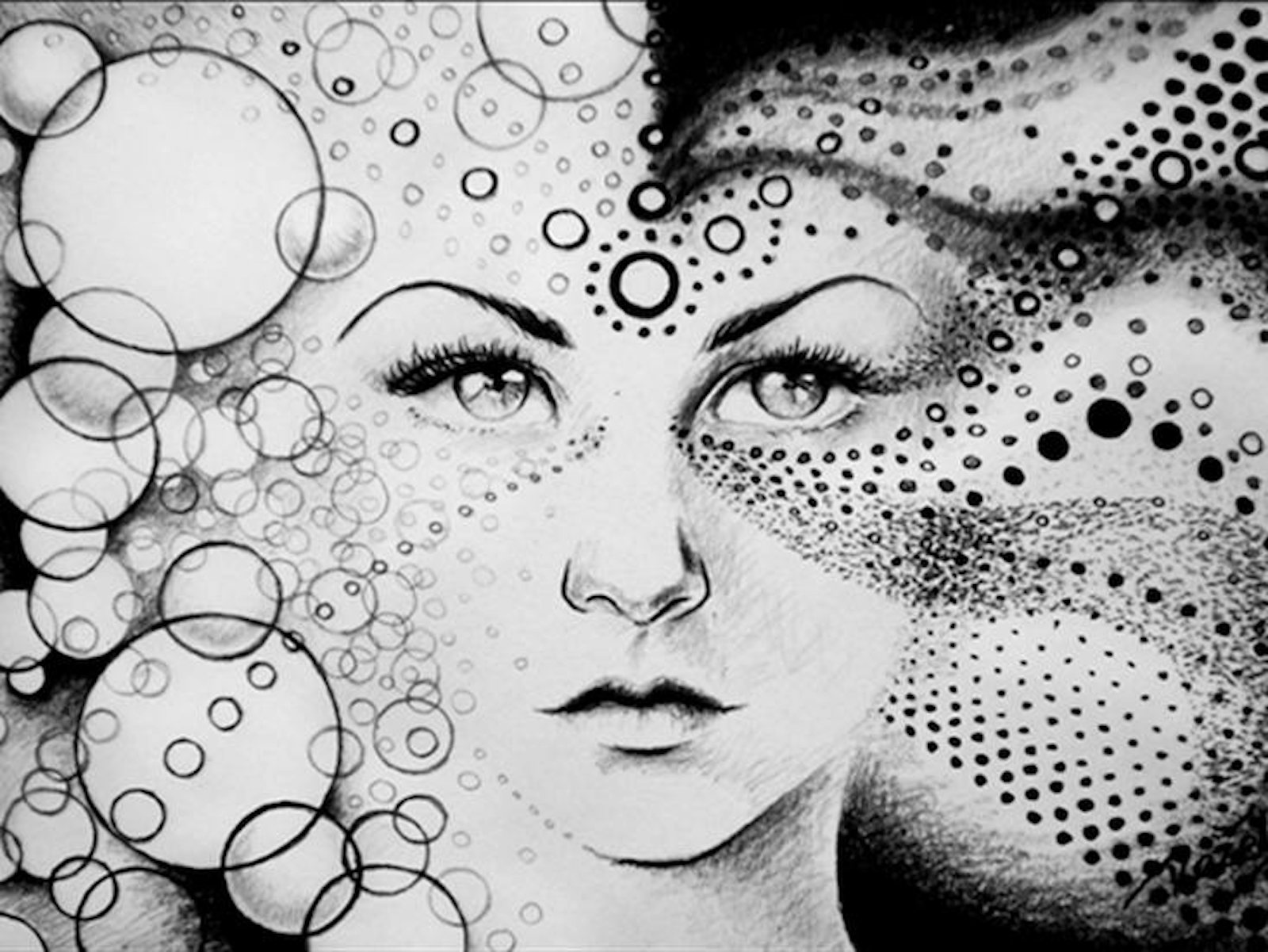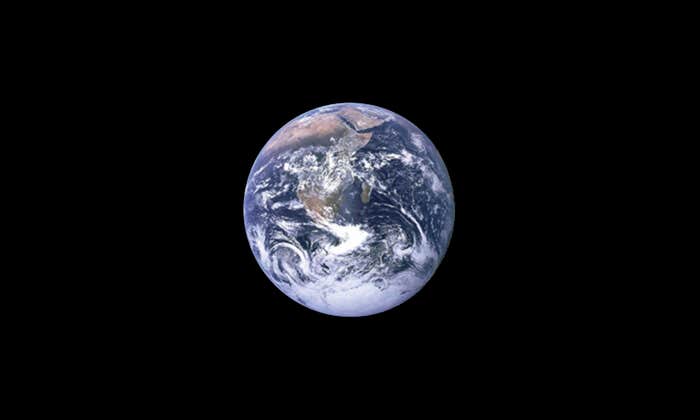In his first lecture on physics to freshmen and sophomores at the California Institute of Technology, in 1961-62, Richard Feynman said:
If, in some cataclysm, all of scientific knowledge were to be destroyed, and only one sentence passed on to the next generations of creatures, what statement would contain the most information in the fewest words? I believe it is the atomic hypothesis (or the atomic fact, or whatever you wish to call it) that all things are made of atoms—little particles that move around in perpetual motion, attracting each other when they are a little distance apart, but repelling upon being squeezed into one another. In that one sentence, you will see, there is an enormous amount of information about the world, if just a little imagination and thinking are applied.
The Greek philosopher Democritus might have said something like that 2,500 years ago. Although his books are lost, we know from the fragments that remain and what others said about him, that he believed everything in the universe was made of atoms in perpetual motion, whirling in space. Large, small, smooth, and slippery, or jagged and hooked, they combine to form the universe—its stars and planets, and the earth and all it contains, including our bodies and our minds. All that is required to understand this is “just a little imagination and thinking”—what physics, chemistry, and biology have provided since the 17th century.
In spite of this success, science (as we now call the metaphysics of Democritus) has not been able to show how mind or human consciousness can be incorporated into it. Democritus had a theory for this, namely, that mind consists of “fire atoms,” extremely small and mobile atoms that create copies or images of the larger ones, becoming our perceptions and thoughts. Though it’s since discarded the fire atom, neurobiology has made some progress as to how perception and thought actually take form. Consciousness may well be made of atoms, and it all begins with sensations.
Sensations are the building blocks of consciousness.
It is clear that neural systems evolved to enable animals to move in their environments—to find food and mates, and to avoid or otherwise deal with predators. Stimuli are received from the environment, assembled by central neural circuits, and transmitted to muscles or other tissues in the animals’ bodies whose coordinated activity enable it to respond. This process occurs in every complex multi-celled animal.
The first step is the conversion of stimuli from the environment into sensations. Since animals are composed entirely of cells, this process must occur at the cellular level—that is, stimuli from the environment activate receptor cells on the surface or within their bodies. These stimuli are of three types: electromagnetic radiation in the range of wavelengths we identify as light, pressures from objects or the air striking the body, and streams of molecules in the air or in direct contact with the animals’ bodies. A variety of receptor cells exist to receive and record these stimuli.
In every case, these environmental stimuli exist in analog form and are converted into digital form by the receptor cells and the neural circuits connected to them. For example, the “eye” of the horseshoe crab Limulus can create a boundary line within a gradient of light from light to dark. That boundary gives the animal something to respond to within the analog stream of radiation. In the human eye, color pigments (carotinoids) in the retina are able to absorb small portions of the electromagnetic spectrum to create the colors we identify and respond to.
The same is true of the other sensory modalities. Specialized receptor cells in the skin, the ear, on the tongue and in the nasal passages respond to selected portions of the swarms of molecules and pressure changes in the environment. All are conversions of analog stimuli into digital form. (The variety of mechanisms of conversion employed by receptor cells and neural tissues are described fully in the chapters on sensory systems in Gordon Shepherd’s textbook, Neurobiology.)
The common element is that a small portion of an undifferentiated stream of stimuli is selected by the organism and given a specific identity. These selected—indeed, one could say, created—identities we identify as sensations (which is why Shepherd titles his chapters on the mechanisms of selection “Sensory Systems”). It’s as if a person were given a bowl of marbles all of the same color, differing in sizes so small that he cannot perceive their difference, and asked to select a particular marble from all the rest. It would be impossible unless he could identify it with a special marker—like, for example, a different color that would distinguish it from all the other marbles. That’s the way organisms solve the problems of interacting with their environments at the cellular level: They create sensations from portions of the streams of stimuli they encounter, portions which guide their responses to that environment.
Sensations are the building blocks of consciousness. They must first be combined into perceptions and converted into objects in the environment. Then neural systems must evolve mechanisms by which they can be remembered or recalled (neurobiologists identify the first appearances of memory in habituation, sensitization, and conditioning); and finally plasticity must develop—the capacity to shape, edit, and organize this neural content, present or remembered, into a picture, experience, or awareness of the “world.” This, in the modern metaphysics of Democritus, is the way consciousness emerges in neural systems.
In 1934, the Estonian biologist Jakob von Uexküll published a monograph titled, A Stroll Through the Worlds of Animals and Men (intriguingly subtitled A Picture Book of Invisible Worlds) in which he attempted to show that every animal creates a “world” (he called it its umwelt) from stimuli in the environment to which it responds. Even an animal such as the common wood tick, with which he begins his essay, creates such a world. The wood tick responds to only three stimuli: butyric acid (which is secreted by the skin glands of mammals), which causes the tick to drop onto it from its perch; the shock of landing on its victim, which causes it to scramble among its hairs; and the warmth of the animal’s skin, which causes it to bore into it for its meal of blood.
These three stimuli alone create an umwelt for the tick, “impoverished” as it may be. We can add to his account only that the three stimuli—butyric acid, the shock of landing, and the warmth of the animal’s skin—are analog stimuli, that is, they are undifferentiated gradients in the environment from which the neural system of the tick selects just portions for its response. Those portions, converted into digital form, are the sensations that constitute its tiny world.
There is nothing “mental” or “physical” in this account of sensations. That distinction makes sense only much further down the line in the evolution of neural systems and requires the development of memory and neural plasticity along with a far richer sensory world than the wood tick’s. Sensations are the creation within neural systems of environmental events cast in different form, but still part of the same single material fabric of the universe. They reside in the animal’s central neural system—its brain (as MRI studies reveal)—and can be given a general location for where they occur. They are not “fire atoms,” of course, but they are fully connected to the universe of atoms.
Mark Titus is a philosopher living in Washington, D.C.
The lead illustration is courtesy of Ivana Rezek via Flickr.
This post, from Mark Titus’ website, was reprinted after editing with the author’s permission.


























